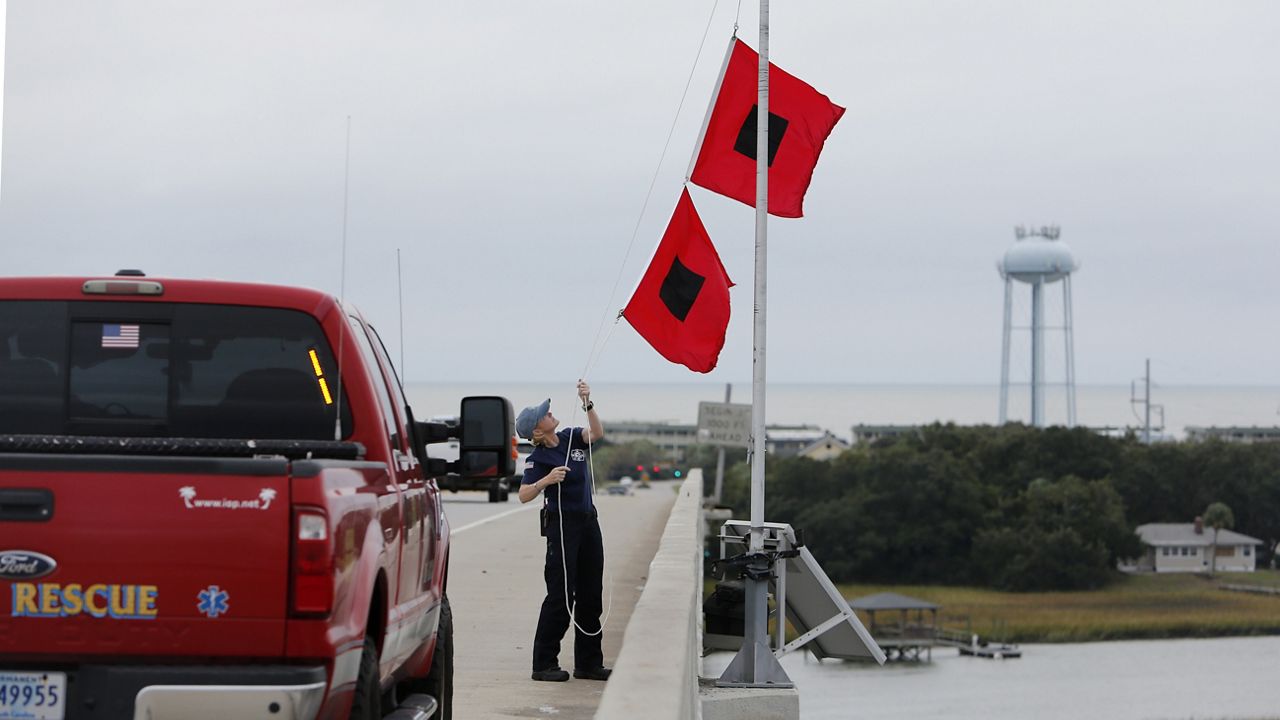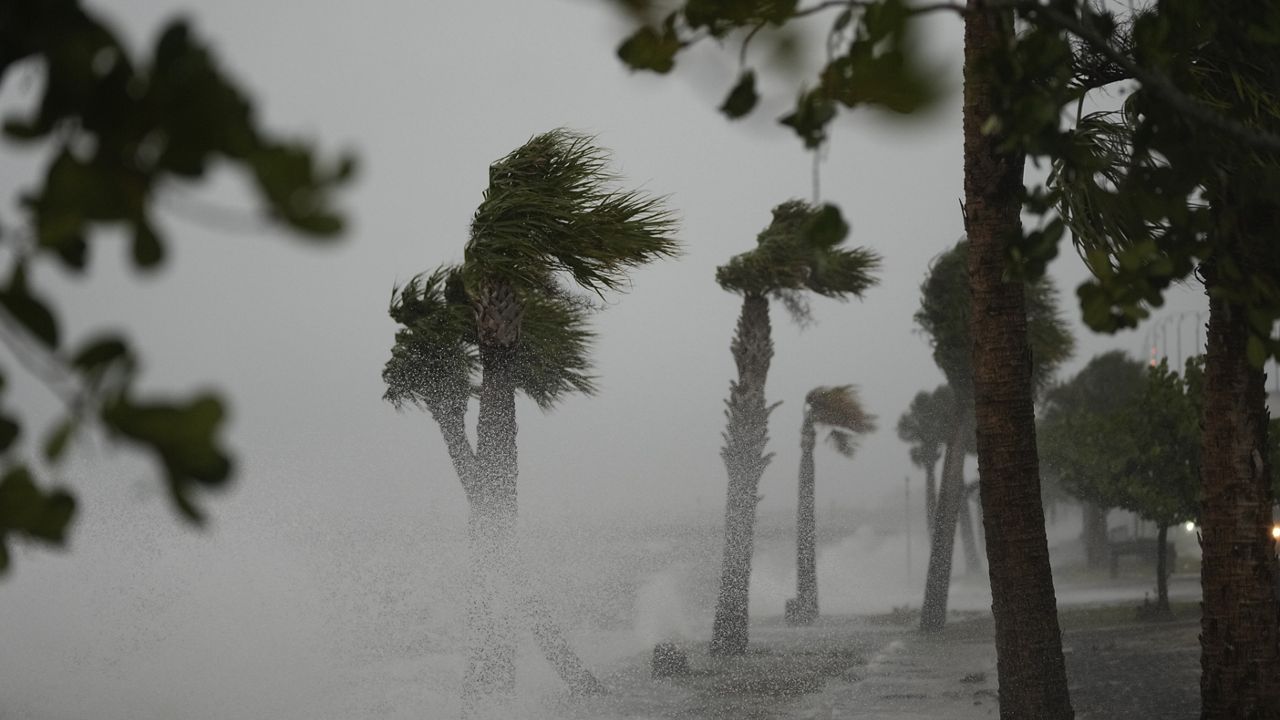A series of powerful storms swept over the central and southern U.S. over the Memorial Day holiday weekend, killing at least 22 people and leaving a wide trail of destroyed homes, businesses and power outages.
The storms inflicted their worst damage in a region spanning from north of Dallas to the northwest corner of Arkansas.
Forecasters said the severe weather could shift to the East Coast later Monday and warned millions of people outdoors for the holiday to watch the skies. A tornado watch was issued from North Carolina to Maryland.
Seven deaths were reported in Cooke County, Texas, near the Oklahoma border, where a tornado Saturday night plowed through a rural area near a mobile home park, Texas Gov. Greg Abbott said at a news conference Sunday. The dead included two children, ages 2 and 5. Three family members were found dead in one home, according to the county sheriff.
Eight people died statewide in Arkansas, Gov. Sarah Huckabee Sanders confirmed in a news conference Sunday evening. An emergency official said two of the deaths were attributed to the circumstances of the storm but not directly caused by weather, including a person who suffered a heart attack and another who was deprived of oxygen due to a loss of electricity.
The deaths included a 26-year-old woman who was found dead outside a destroyed home in Olvey, a small community in Boone County, according to Daniel Bolen of the county’s emergency management office. One person died in Benton County, and two more bodies were found in Marion County, officials said.
In Oklahoma, two people died in Mayes County, east of Tulsa, officials said. The injured included guests at an outdoor wedding.
Three people have died in Kentucky. Gov. Andy Beshear declared a state of emergency early Monday in a post on social media platform X, citing “multiple reports of wind damage and tornadoes.”
The small community of Charleston took a direct hit from the storm Sunday night, where several homes were destroyed and utilities were knocked out.
“It's a big mess,” said Rob Linton, who lives in Charleston and is the fire chief of nearby Dawson Springs. “Trees down everywhere. Houses moved. Power lines are down. No utilities whatsoever – no water, no power.”
Charleston is an unincorporated community two miles north of Dawson Spring, which was devastated by a tornado in late 2021. Beshear's father, former two-term Gov. Steve Beshear, grew up in Dawson Springs.
In Texas, about 100 people were injured and more than 200 homes and structures destroyed, Abbott said, sitting in front of a ravaged truck stop near the small agricultural community of Valley View. The area was among the hardest hit, with winds reaching an estimated 135 mph (217 kph), officials said.
“The hopes and dreams of Texas families and small businesses have literally been crushed by storm after storm,” said Abbott, whose state has seen successive bouts of severe weather, including storms that killed eight people in Houston earlier this month.
Abbot signed an amended severe weather disaster declaration on Sunday to include Denton, Montague, Cooke and Collin on a list of counties already under a disaster declaration sparked by storms and flooding in late April.
Hugo Parra, who lives in Farmers Branch, north of Dallas, said he rode out the storm with 40 to 50 people in the bathroom of the truck stop. The storm sheared the roof and walls off the building, mangling metal beams and leaving battered cars in the parking lot.
“A firefighter came to check on us and he said, ‘You’re very lucky,’” Parra said. “The best way to describe this is the wind tried to rip us out of the bathrooms."
Multiple people were transported to hospitals by ambulance and helicopter in Denton County, also north of Dallas.
A DEADLY SERIES OF STORMS
The destruction continued a grim month of deadly severe weather in the nation's midsection.
Tornadoes in Iowa last week left at least five people dead and dozens injured. The deadly twisters have spawned during a historically bad season for tornadoes, at a time when climate change contributes to the severity of storms around the world. April had the second-highest number of tornadoes on record in the country.
Meteorologists and authorities issued urgent warnings to seek cover as the storms marched across the region late Saturday and into Sunday. “If you are in the path of this storm take cover now!” the National Weather Service office in Norman, Oklahoma, posted on X.
Harold Brooks, a senior scientist at the National Severe Storms Laboratory in Norman, said a persistent pattern of warm, moist air is to blame for the string of tornadoes over the past two months.
HOMES DESTROYED, ROADS BLOCKED
Residents awoke Sunday to overturned cars and collapsed garages. Some residents could be seen pacing and assessing the damage. Nearby, neighbors sat on the foundation of a wrecked home.
In Valley View, near the truck stop, the storms ripped the roofs off homes and blew out windows. Clothing, insulation, bits of plastic and other pieces of debris were wrapped around miles of barbed wire fence line surrounding grazing land in the rural area.
Kevin Dorantes, 20, was in nearby Carrollton when he learned the tornado was bearing down on the Valley View neighborhood where he lived with his father and brother. He called the two of them and told them to take cover in the windowless bathroom, where they rode out the storm and survived unharmed.
As Dorantes wandered through the neighborhood of downed power lines and devastated houses, he came upon a family whose home was reduced to a pile of splintered rubble. A father and son were trapped under debris and friends and neighbors raced to get them out, Dorantes said.
“They were conscious but severely injured,” Dorantes said.
WIDESPREAD POWER OUTAGES
The severe weather knocked out power for tens of thousands of homes and businesses in the path of the storms.
On Monday, more than 187,000 customers were without power in Kentucky, according to the tracking website poweroutage.us. Some 84,000 customers were without power in Alabama; 74,000, West Virginia; 70,000, Missouri; and 63,000, Arkansas.
Inaccessible roads and downed power lines in Oklahoma also led officials in the town of Claremore, near Tulsa, to announce on social media that the city was “shut down” due to the damage.
MORE SEVERE WEATHER IN FORECAST
The system causing the latest severe weather was expected to move east over the rest of the holiday weekend.
The Indianapolis 500 started four hours late after a strong storm pushed into the area, forcing Indianapolis Motor Speedway officials to evacuate about 125,000 race fans.
More severe storms were predicted in Illinois, Missouri, Kentucky and Tennessee.
The risk of severe weather moves into North Carolina and Virginia on Monday, forecasters said.






)


